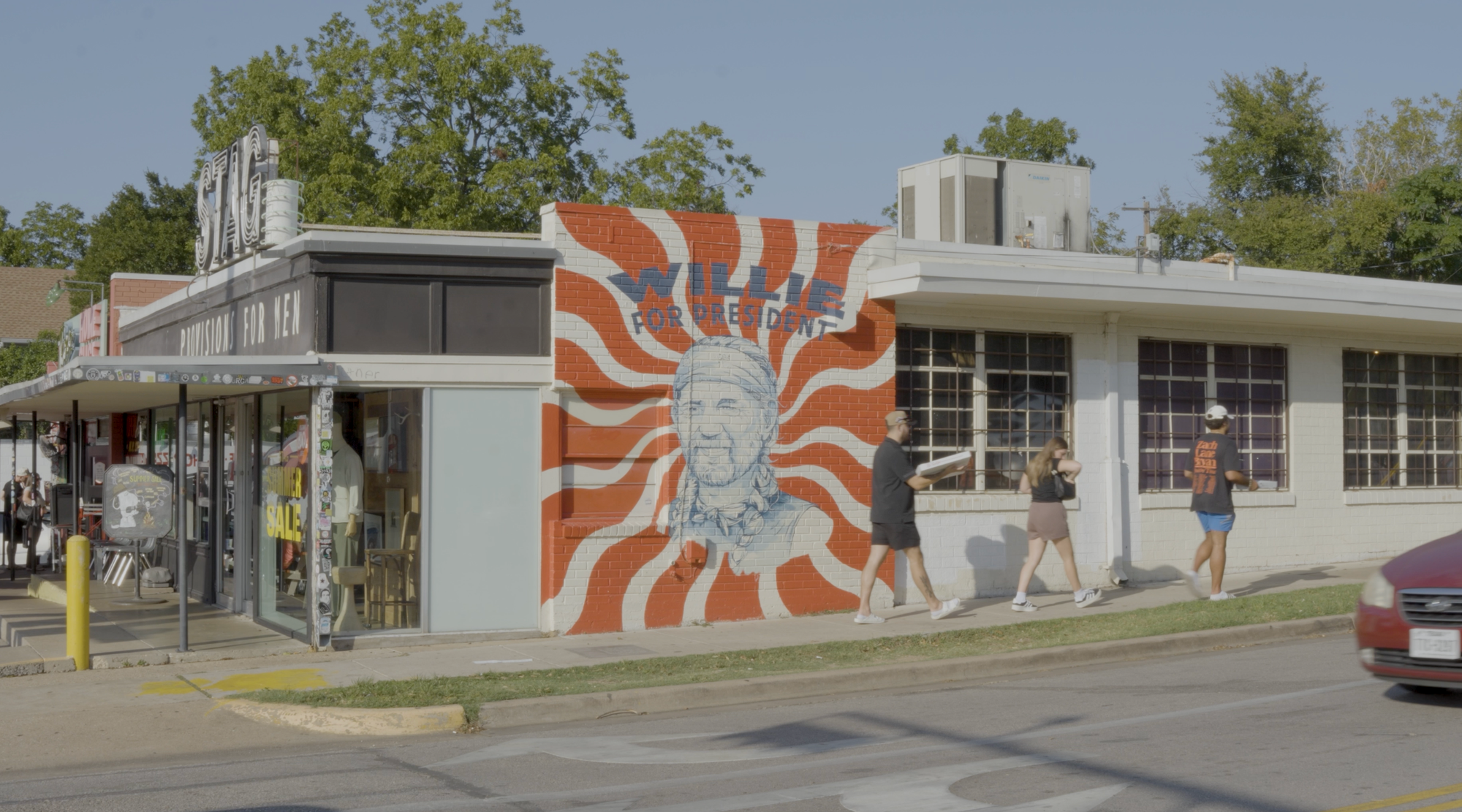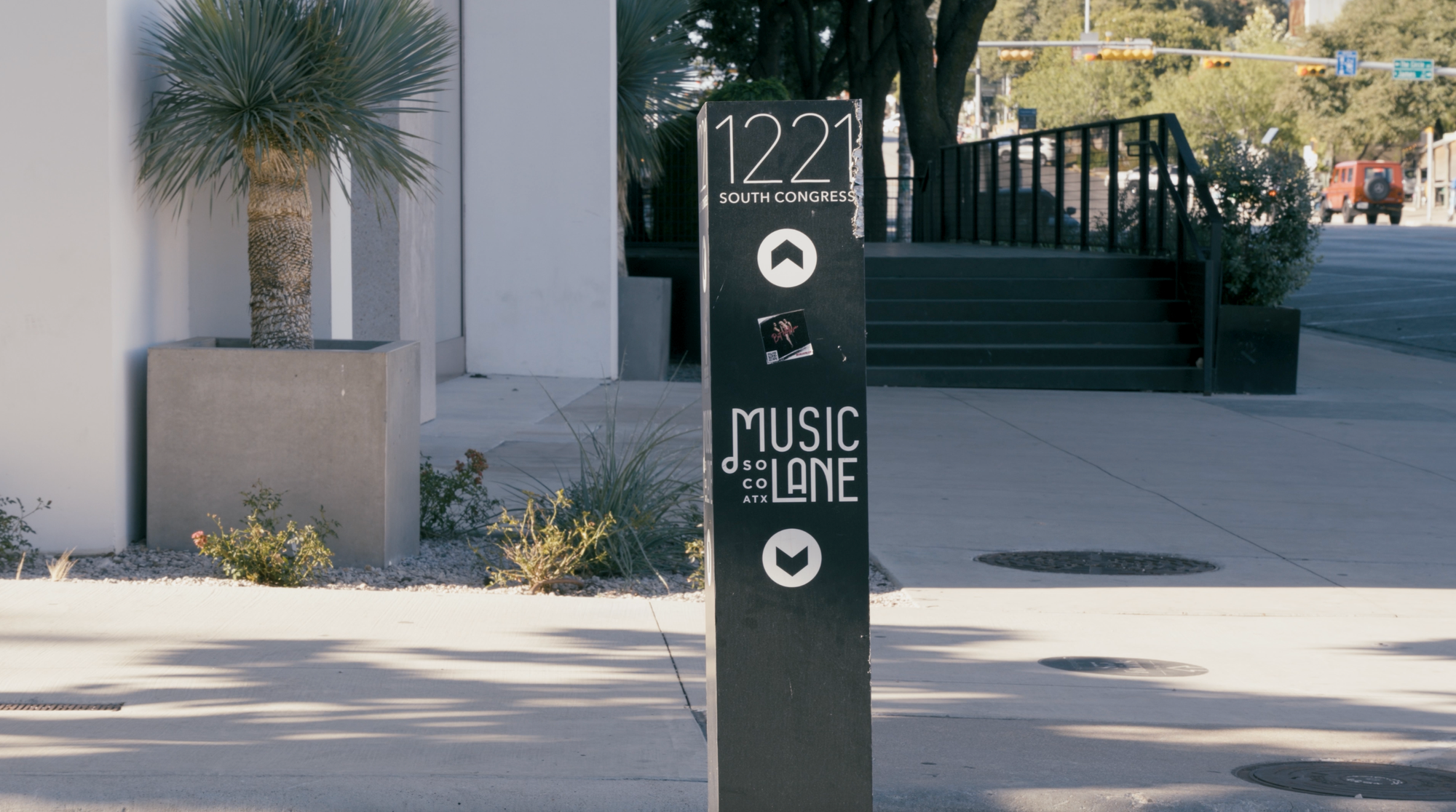Austin, Texas.
A city that’s near and dear to my wife and I’s love story. It’s where we met. And in a short time after, it’s where together, we left (and moved South to San Antonio).
I moved to Austin in the summer of 2016. It felt for the first time that I was doing something radically different with my life. Setting out on my own. I had traveled a good amount before, but moving to Texas was the first time I really “lived” somewhere else.
I lived a 20-minute walk away from one of the most famed streets in the whole “town” (if it could still be called that), South Congress.
Neither of my subjects for this story I’m telling here, existed in the short year or so span I lived in Austin. One, in the past, which arguably created the culture that attracted people like myself to move there, and one in the future that was built to capitalize on an opportunity to “serve” people (somewhat) like myself who now occupied the area.
We’ll start with the latter, Music Lane.
Music Lane, a massive 163,000-square-foot complex with retail storefronts, restaurants, and more, now with an undeniable presence just down the street from where the birthplace of Austin’s “live music” heritage sits (more on the heritage, later).
Music Lane was developed by Turnbridge Equities, who’s tag line reads on their website:
"Uncovering Opportunity. Creating Value.”
Turnbridge Equities was founded by Andrew Joblon, who grew up in Massachusetts and “cut his teeth” in real estate development, working for one of the most highly regarded firms in New York City.

It was there that he met his future partner in Turnbridge, Ryan Nelson, a Nebraska native who, to his credit, did happen to get an MBA from the University of Texas McCombs School of Business in Austin.
As it was written in Joblon’s profile in The Real Deal: Real Estate News, “When Joblon arrived, there were just two national tenants on the entire shopping strip [of South Congress].” Italics mine.
Joblon described to The Real Deal: Real Estate News reporter:
“Our thesis was Austin doesn’t have its iconic street like the rest of the cities of its size,” Joblon said. “We thought if we could obtain some critical mass there that we could have something special.”
I think it’s worth highlighting what Joblon said in his observation of Austin. “Blah, blah, blah, no iconic street…blah blah blah, we could have something special.”
Was he referring to himself and his firm’s portfolio? Or was he referring to the community of South Austin and, specifically, the culture of South Congress?
Well, here’s a description of Music Lane’s tenants from that same real estate publication:
The ground-floor retail caters to Austin’s new moneyed, athleisured elite: Hermes, Rag & Bone, Equinox, Lululemon, Le Labo and Sweetgreen are some of the tenants that together take up more than 1,700 feet of frontage. Above them lie offices for Deloitte, Gensler and McKinsey & Company, full of people likely to patronize those places. The whole thing is anchored by a Soho House, which Joblon brought in through a personal connection early in the development process. He kept the news quiet, though.
“Our goal was to buy everything we could around it,” he [Joblon] said.
Okay, hang up your slacks, grab some jeans and rip a hole in them if there isn’t one already, let’s jump back to talk about ‘something special’ that happened a few minutes walk away from that iconic shopping strip, South Congress, in the 1970s.
The Hippies Who Couldn’t Hold It Together
Wedged between South Congress, Riverside Dr, and South First, At 525 ½ Barton Springs Road on August 7th, 1970, Armadillo World Headquarters—Texas music hall and beer garden, opened its doors with ambitions to become “a music center of the universe.”
And you could easily make the case, that concert promoter Eddie Wilson and the other few founding members of The ‘Dillo did just that.

From 1970 to 1980, the venue welcomed the likes of Willie Nelson, Waylon Jennings, Ray Charles, Stevie Ray Vaughn, ZZ Top, Freddie Fender, Freddie King, and Frank Zappa.
Bruce Springsteen played shows there, AC/DC played there, the Clash played there, along with many, many others.
Although illicit activity within the venue’s doors was ubiquitous, the city of Austin embraced it—even naming its shuttled bus service “the ‘Dillo” in its honor.
Ann Richards, who served as the 45th Governor of Texas from 1991 to 1995, said, “[AWHQ] was one of the most exciting, and remained one of the most exciting, places in the United States for the years that it was in operation.”
Her daughter, Cecile Richards, who served as the President of Planned Parenthood for 12 years, said, “[AWHQ] became such a center of not only great music and people who probably never would have performed in Austin, but it was a cultural cornerstone.”
A story in Time Magazine said that Armadillo World Headquarters was to Austin, as The Fillmore, another historic venue, was to San Francisco in the 1960s.
Would Austin be the ‘Live Music Capital of the World,’ without the Dillo’?
Eddie Wilson, as mentioned, one of the founders, said in his memoir, “Armadillo people blazed the trail that others followed.”
As Wilson further explained, Austin City Limits came about in the mid-70s, after years of “pioneering efforts based at Armadillo World Headquarters to get Austin music on televisions and cable.”
The annual ACL music festival at Zilker Park in Austin was a spin-off from that very TV series.
Regardless of the details of who gets credit for what, it’s clear, that the masterminds behind the Armadillo World Headquarters uncovered an opportunity in Austin, Texas, to create some real value.
The only problem? As the author of The Real Deal profile wrote, “the hippies couldn’t hold it together.”
The ‘Dillo, was a financial flounder. The venue couldn’t stay afloat, citing the high costs of paying for acts with a combination of low ticket prices to get people in the door, and as well they were sitting on five plus acres of prime real estate in a rapidly changing Austin, Texas which of course was expensive and only got more so.
They filed for Chapter 11 bankruptcy in 1977, hung on for a few more years, and finally hosted their last show on December 31, 1980, before they had to close their doors for good.
Turns out culture ain’t cheap.
It’s hard to argue that the Armadillo World Headquarters wasn’t a smash success—and for the city of Austin, it’s hard to argue that the Armadillo World Headquarters didn’t create something absolutely invaluable.
An interesting culture.
A culture so interesting, so compelling, so valuable, that others, see an opportunity.
I should also say, there’s never not culture, it’s just matter of what culture becomes as time passes, things change, and cultural phenomena age out.
To be fair, maybe you could say “Austin’s new moneyed,” is in the driver's seat of dictating Austin’s culture now and into the near future.
Creating something interesting, worthwhile, historic, something worth talking about, writing books about, and recounting countless stories about, requires serious creativity, real entrepreneurial spirit, and a willingness to do things, make things, and preserve things people value that they might not be prepared to pay for.
To be clear, I’m not saying that development and change are bad indiscriminately.
Perhaps the ‘something special’ about the likes of an Armadillo World Headquarters is the moment in time, the era that it possessed, maybe that was something, or someplace that was supposed to cease to exist at some point. Nothing is forever.
However, in the change, in the development, we need to be careful, extremely careful as to what it’s all for.
Creating value? Truly, creating value?
Or extracting it.
Armadillo World Headquarters was a financial failure but at the same time, an absolute historic success. It doesn’t always have to be that way financially unsustainable for something to be ‘special’ and celebrated—but it’s worth us as San Antonians, interrogating if our actions as individuals and as community members are both creating and preserving a culture that we want to be part of.
Is our culture becoming a commodity? Cheap? Something that could be bought or sold?
Or something worth vastly more?
Our culture can be cheap, if we in San Antonio as a community decide to let it be.
Or given just how rich in culture we as a city are as of all us can so clearly see, we can and should ensure it remains invaluable.
South Austin—it was home to the Texas music hall responsible for the capital city of the Lone Star State becoming ‘the Live Music Capital of the World.’
And now, it’s home to Music Lane.
Sure, maybe the hippies couldn’t hold that venue together, but, the culture they created, vastly outgrew what only their band of hippies could carry on.
Maybe a handoff was missed, or reinforcements never came—because it’s a community that both creates and protects what’s special, especially when others uncover their opportunity to extract value by creating a commodity.


